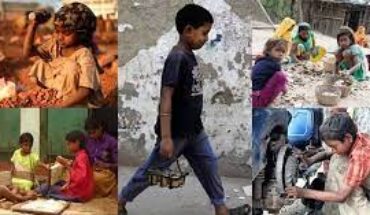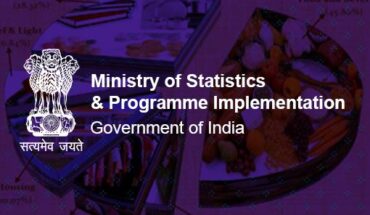
Are we closer to the Sustainable Development Goal (SDG-8) of providing decent and productive employment to all job seekers in the country by 2030? The recent trend of economic growth and unemployment statistics show that we are probably not. To achieve this, there isa needof a quantum jump in the overall economic growth and growth in job generating sectors, inthe next few years.
Indian economy has not recovered from the covid-19 pandemic crisis yet. The post pandemic period witnessed a relatively higher growth of 9 percent in 2021-22 (at 2011-12 constant prices) owing to a lower GDP base in 2020-21. But the growth failed to keep this momentum as Russia-Ukraine military conflict started in early 2022disrupted the global supply chain. The oil economy has been badly affected, which spills over to the sectors of the economy.
Indian economy is not free from the global slow down. Its growth hascome down to 6.7 percent in 2022-23. The current year i.e., 2023-24 is expected to witness a further slowdown of the economy. As projected by the Reserve Bank of India and the Economic Survey,2022-23, the economic growth is likely to be around 6 percent in 2023-24.
Economic growth is essential for job creation. Employment further generates consumption and investment demand which further acceleratesgrowth, and the cycle continues. The impact of gradual slowdown in the economy in the previous two years and the expected slowdown in the current year has been felt in the job market.
According to the latest round of Periodic Labour Force Survey (PLFS), 2023, the third quarter i.e., October to December of 2022, unemployment rate was 7.2 percent. The unemployment rate continues to rise in 2023. The updated figure received from CMIE shows that the unemploymentrate stands at 8.1 percentas on April, this year. According to the CMIE sources, the unemployment curve hasbeen witnessing an upward trend since January.
A group of economists and public policy enthusiastsopinethat the recent rise in the rate of unemployment is due to a rise inLabourForce Participation Rate (LFPR). During 2021 and 2022, India’s LFPR in the age group of 15 and above in the urban areas has increased from 47.3 percent to 48.2 percent, as reported by the PLFS quarterly report released in February 2023. The urban female LFPR has increased from 20 percent to 22.3 percent whereas, the urban male LFPR has declined from 73.9 percent to 73.3 percent during the same period.
Globally, India stands as one among the countries having a lower LFPR. The International LabourOrganisation (ILO) estimate shows that India’s LFPR is 49 percent compared to the world average LFPR of 59 percent as in 2021. The LFPR in Europe and United States is 61 percent and 57 percent respectively. Even in the neighbouring countries such as, Pakistan and Bangladesh, the LFPR stands at 53 percent and 58 percent respectively in the same year.
At the state level in India, the LFPR in the age group of 15 and above follows a skewed distribution with no sign of any match with state’s economic status. In the states such as Andhra Pradesh, Chhattisgarh and Himachal Pradesh, the LFPR in the urban area is above 60 percent. In the relatively developed states such as Delhi and Goa, the LFPR in the urban area is 47 percent and 43 percent respectively. Bihar as a lower percapita income state falls in this group with a lower LFPR of 41 percent. Surprisingly, the urban female LFPR in Delhi is 12 percent as in 2021.
The rise in LFPR is a symbol of economic progress as it presents rising interest among the youth to participate in economic activity. This interest helps to bring quality and diversity to the labour force and thus enhances its strength. It also helps to reduce the productivity gap in the economy.
The recent rise in India’s LFPR and particularly, the female LFPR in recent times as reported by the PLFS and CMIE is a challenge for the country. The demographic structure of India shows that even a smaller rise in LFPR would release a large labour force and would shift the supply curve to the right. At this stage if the economy is not in shape of expansion, the additional labour force would badly impact the wage rate and disrupt the atmosphere of decent job market by pushing the wage down below the minimum.
Therefore, the recent slowdown in economic growth as mentioned above is aconcern for job market. However, the recovery in the sectors such as tourism and manufacturing and their growth momentum during the post pandemic period is a sign of hope of creating employment opportunities in a decent way.
The tourism sector has witnessed relatively higher growth as per the expectations. The trade, hotels and restaurants which contribute to the growth in tourism sector was down by over 23 percent in 2020-21 and but, has recovered with a relatively higher growth rate of 13 percent in 2021-22. The growth rate in the sector in the last three quarters in 2022-23 is estimated to be 25 percent, 15 percent and 9 percent respectively.
The manufacturing sector witnessed a growth rate of 2.9 percent in 2020-21 when the overall economic growth was down by 5.8 percent. In 2021-22, the growth in the manufacturing sector rose to 11 percent. However, after registering a growth rate of 6 percent in the first quarter of 2022-23, the manufacturing sector slid by over 3 percent in its second and the third quarter.
Economic growth and its diversity are essential to provide decent jobs to the people of the country. No doubt, the economy has shown adequate resilience to maintain its growth momentum amid various global headwinds. India stands as one of the fastest growing economies during the post-covid 19 pandemics according to the report by IMF World Economic Outlook, released in April,2023. The external world is optimistic about India. The larger domestic consumer base has supported the economy to defend against any global recession. With this optimism if the economy grows with double digit growth, we can create opportunity for every job seeker of the country and reach the SDG-8 target before the scheduled time.
Dr. Sridhar Kundu, Bharti Institute of Public Policy ,Indian School of Business, Mohali, Punjab






